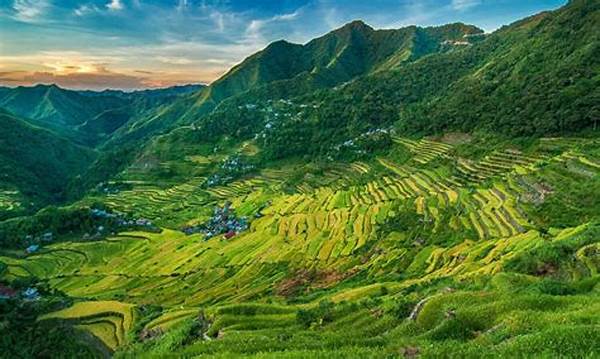Photography Tips for Capturing Natural Landscapes
When it comes to capturing the breathtaking beauty of nature, having a few photography tips for capturing natural landscapes up your sleeve can make all the difference. Imagine standing on a cliff as the sun dips behind the horizon, painting the sky with hues of orange and pink—a moment made to be immortalized in a photograph. However, without the right approach, even the most stunning scenery can appear lifeless on camera. Fear not! By mastering a few simple techniques, you can transform your landscape photography from mundane to magnificent.
Read More : Snorkeling With Whale Sharks In Mexico
First and foremost, let’s talk about lighting. It’s the secret sauce in the recipe of great landscape photography. The golden hours—just after sunrise and right before sunset—are your best friends. This is when the light is soft, and shadows create incredible depth and texture. A tip to remember: always check the weather forecast. A cloudy day might just be what you need for a dramatic sky, adding a layer of emotion to your photos. Embrace the unpredictable nature of the weather; each condition offers a unique storytelling opportunity.
Next on the list is composition. The rule of thirds is a staple in photography tips for capturing natural landscapes. By envisioning a grid splitting your frame into nine equal sections, position the main elements of your photo along these lines or at their intersections. This adds harmony and balance to the composition. Don’t hesitate to experiment with perspectives. Lie low for a worm’s eye view or climb higher for a bird’s-eye shot—each vantage point offers a fresh angle of the landscape that might have been missed otherwise.
Now, let’s sprinkle some tech talk. A sturdy tripod is a landscape photographer’s trusty sidekick. It ensures stability, especially when shooting in low light to avoid the dreaded blur. Additionally, a polarizing filter is a game changer. It enhances the sky’s color, reduces glare, and gives your images the vibrancy they deserve. And while post-editing software can be your friend, aim to capture the most authentic shot in-camera. Let’s be real, the less time you spend on your computer, the more time you get to adventure into the wilderness!
Capturing the Perfect Shot
But the journey doesn’t stop there, folks! In the grand adventure of photography tips for capturing natural landscapes, we’re about to dive deeper into the nuances that elevate your storytelling.
—
Unveiling the Beauty of Natural Landscapes
Let’s delve further into what makes landscape photography not just a skill, but an art form, through more refined photography tips for capturing natural landscapes.
Elevate Your Shots with Advanced Techniques
For those ready to take their landscape photography to the next level, understanding advanced techniques is crucial. Long exposure shots, for example, can turn a rushing waterfall into a silken masterpiece or transform the night sky into a dreamy spectacle of swirling stars. This technique requires patience and precision, often involving a neutral density filter to manage light intake and capture the scene in its entirety without overexposure.
Incorporating leading lines into your composition guides the viewer’s eye across the image, providing depth and focus that lead to a central point of interest. These lines can be anything from a winding river to a path through the woods. The key is to make them subtle yet effective, naturally blending into the grandeur of the landscape while silently ushering the observer through your visual narrative.
Don’t forget to pay homage to the smallest elements within the greater scenery. Often, it’s the intricate details, like a lone flower standing resilient against the wind, that can evoke the most profound emotions. Macro lenses are perfect for these smaller subjects, allowing you to celebrate nature’s finer intricacies within a broad expanse.
Read More : Scenic Rice Fields Surrounding The Natural Fence Tourist Spot Admired
The Emotional Journey Behind Each Click
Every photograph tells a story, imbued with the emotions of the photographer. These photography tips for capturing natural landscapes are only as good as the passion behind the lens. Many great photographers claim that it’s not just about perfection but the feeling you want to convey. Whether it’s the eerie solitude felt in a fog-filled forest or the awe of a vast mountain range, let your emotions guide your camera.
Imagine a scene where an experienced photographer recalls stumbling upon a serene lake at dusk, the water mirroring the fiery sky. In sharing this story, they express how each photograph captured that night was like bottling a moment of tranquility, giving them strength during turbulent times. Such testimonials reveal that landscape photography transcends the technical; it becomes a personal archive of wonder and introspection.
Learn, Apply, and Repeat
Implementing these diverse tips requires practice, intuition, and a willingness to make mistakes. Breaking free from conventional rules often leads to discovering your unique style within the realm of landscape photography. Challenge yourself to capture the scenes that resonate with your spirit and inspire others. Remember, nature is the ultimate canvas, and you have the brush to paint its narrative.
Concluding this journey through photography tips for capturing natural landscapes, always strive to discover new landscapes and perspectives, honing your craft with each capture. Remember, every click of the shutter is a step forward in your artistic journey, one where the destination is as rewarding as the path taken to get there.
—
Actions for Aspiring Landscape Photographers
Diving deeper into these actions, scouting locations before shooting is not only a logistical necessity but a creative spark. Imagine standing amidst a valley, the possibilities as endless as the horizon. Understanding the terrain, light patterns, and hidden gems can save time and enhance your photographic narrative.
Similarly, planning around weather patterns can add an exciting layer to your portfolio. A stormy sky or the gentle mist of early morning can drastically change the mood of your landscape, offering a dynamic range of storytelling opportunities. Nature’s unpredictability becomes a collaborative partner rather than an obstacle, enhancing the authenticity and emotion captured within each frame.


